Comet Garradd C/2009 P1
Comet Garradd C/2009 P1
Comets come from a place called the sphere cometary remnant of the past and distant reservoir of matter that surrounds the solar system. Comet Garradd C/2009 P1, is a comet that was discovered August 13, 2009, by astronomer Gordon Garradd on a photograph taken at the observatory of Spring Sinding Australia.
In August 2011, the comet was Garradd in the constellation Sagittarius, alongside the globular cluster Messier 71. She traveled to more than 200 million kilometers from Earth. On the video we have seen passing near the cluster M 71 which is him, much further, to 13,000 light years. Comet Garradd starred in the summer of 2011. On February 4, 2012, the comet is back, this time deploying, a dust tail fan, green, pushed by the solar wind. Its magnitude was greater then, between 6 and 8, which allowed to see her among the stars, with binoculars or a small telescope in the constellation Hercules, near the globular cluster M 92.
Comet C/2009 P1 Garradd remained visible in the sky for several months, offering fans a good show well equipped. It was located closer to the Sun in December 2011. The comet Garradd is a comet relatively high, but never really come near the Earth or the Sun in its journey through the solar system. Very remote, it feels like to move very slowly.
NB: Comets are small spheres of ice traveling between the stars, and were surprised by the Sun.
Their orbits are elliptical trajectories, extremely eccentric around the Sun.
When a comet approaches the Sun, the outer layer vaporizes and forms a gaseous envelope (coma). Solar radiation exerts pressure on the coma and force particles and gases away from the Sun, forming a glowing tail of ionized particles.
Comets shine in the memory of mankind.
They have long been the misfortune, disaster and upheaval.
A comet is not the messenger of doom, but the guardian of the past, one that holds the key to our origin.
In the 19th century with the separation of science and religion, the image of the comet is no longer negative. They can contemplate, for weeks, before they disappear, to return, 10, 100 or 3000 years later.
Comets are dirty icebergs traveling in space, swarming primordial matter.
 The Asteroid Bennu: A Rotating Rubble Pile
The Asteroid Bennu: A Rotating Rubble Pile  Yarkovsky Effect on Asteroids
Yarkovsky Effect on Asteroids  Arrokoth, the
red snowman
Arrokoth, the
red snowman  The Kirkwood Gaps in the Main Asteroid Belt
The Kirkwood Gaps in the Main Asteroid Belt 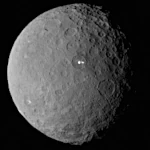 What is the asteroid belt?
What is the asteroid belt?  The Great Comet of 1577 Shattered the Crystal Spheres
The Great Comet of 1577 Shattered the Crystal Spheres  The Invisible Threat of Asteroids: From Pebbles to Flying Mountains
The Invisible Threat of Asteroids: From Pebbles to Flying Mountains  Meteorites: Messengers from Space and Witnesses of the Solar System
Meteorites: Messengers from Space and Witnesses of the Solar System  Comet Hartley 2: The Icy Heart Scrutinized by Deep Impact
Comet Hartley 2: The Icy Heart Scrutinized by Deep Impact 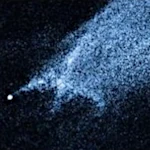 When Two Asteroids Collide: The Strange Case of P/2010 A2
When Two Asteroids Collide: The Strange Case of P/2010 A2  2005 YU55: The 400 m Asteroid that Grazed Earth
2005 YU55: The 400 m Asteroid that Grazed Earth  Asteroid Apophis: The Perfect Candidate for a Global Impact?
Asteroid Apophis: The Perfect Candidate for a Global Impact?  Vesta: The Colossus of the Asteroid Belt
Vesta: The Colossus of the Asteroid Belt 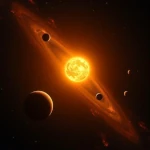 From Asteroids to Planets
From Asteroids to Planets
 2012 and Comet ISON: Between Promise of Brilliance and Disappointment
2012 and Comet ISON: Between Promise of Brilliance and Disappointment  Giants of the Asteroid Belt: Classification by Size
Giants of the Asteroid Belt: Classification by Size  Impact
craters on Earth
Impact
craters on Earth  Online Simulator: Orbits of Asteroids
Online Simulator: Orbits of Asteroids  Online Simulator: Orbits of Near-Earth Asteroids
Online Simulator: Orbits of Near-Earth Asteroids  Rosetta has a date with a comet
Rosetta has a date with a comet  Near-Earth Asteroids: An Underestimated Threat to Our Planet?
Near-Earth Asteroids: An Underestimated Threat to Our Planet?  Asteroid 2009 DD45: A Reminder of Planetary Vulnerability to Asteroids
Asteroid 2009 DD45: A Reminder of Planetary Vulnerability to Asteroids 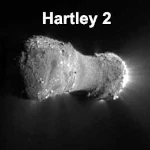 Strange Resemblance Between Comet Hartley 2 and Asteroid Itokawa
Strange Resemblance Between Comet Hartley 2 and Asteroid Itokawa 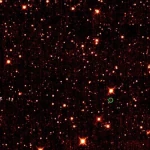 Earth's Trojan Asteroids: Companions Sharing Our Orbit
Earth's Trojan Asteroids: Companions Sharing Our Orbit  Turin Scale: A Classification of Impact Risks
Turin Scale: A Classification of Impact Risks  The Nice Model: Towards an Explanation of the Late Heavy Bombardment
The Nice Model: Towards an Explanation of the Late Heavy Bombardment 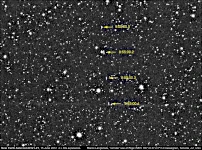 NEO Monitoring: The Case of Asteroid 2012 LZ1
NEO Monitoring: The Case of Asteroid 2012 LZ1  Comet Lemmon (C/2012 F6): The Southern Hemisphere's Green Visitor
Comet Lemmon (C/2012 F6): The Southern Hemisphere's Green Visitor  Asteroid 2012 DA14 passed on February 15, 2013
Asteroid 2012 DA14 passed on February 15, 2013 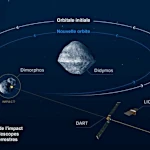 Planetary defense with Didymos and Dimorphos
Planetary defense with Didymos and Dimorphos  Chariklo and its rings: a surprising centaur asteroid
Chariklo and its rings: a surprising centaur asteroid  Rosetta and Philae: A Feat 500 Million Kilometers from Earth
Rosetta and Philae: A Feat 500 Million Kilometers from Earth  The Passage of Comets: Eccentric Orbits at the Heart of the Solar System
The Passage of Comets: Eccentric Orbits at the Heart of the Solar System 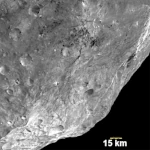 Vesta and its Curiosities: The Enigma of the Torn South Pole
Vesta and its Curiosities: The Enigma of the Torn South Pole  Meeting the Asteroids: The Main Belt
Meeting the Asteroids: The Main Belt 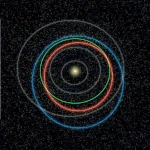 Orbits of Near-Earth Asteroids: When Asteroids Brush Past Earth
Orbits of Near-Earth Asteroids: When Asteroids Brush Past Earth 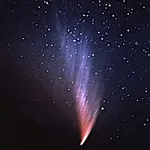 Wandering
comets
Wandering
comets  Asteroid Pallas: A Giant of the Main Belt
Asteroid Pallas: A Giant of the Main Belt  Asteroid Juno: an unknown giant of the solar system
Asteroid Juno: an unknown giant of the solar system  Ganymed (1036): Near-Earth and Mars-crosser
Ganymed (1036): Near-Earth and Mars-crosser  Are there natural satellites of natural satellites?
Are there natural satellites of natural satellites?  Earth's quasi-satellite: 2016 HO3
Earth's quasi-satellite: 2016 HO3